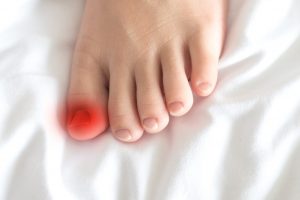The footwear industry has expanded significantly in recent years to expand the availability of shoes for plantar fasciitis. Did you know that around one out of ten people will experience plantar fasciitis at some point?
Plantar fasciitis can be a severe and frustrating condition. The pain and stiffness in the feet can even limit mobility in some people. Fortunately, if you choose the most comfortable shoes for this condition, you can get back on your feet and resume your daily activities.
But what should you look for when alleviating footwear for plantar fasciitis? Are shoes for this condition any different from regular shoes? Keep reading and learn what you should look for when choosing the best shoes for plantar fasciitis.
Shoes With a Slight Heel
Ordinarily, the plantar fascia extends from your heel to your toes. It functions to give structure and support to your foot along with flexibility. The problem with plantar fasciitis is that the plantar fascia at the bottom of your foot becomes stiff for one reason.
However, when this fascia starts to thicken, plantar fasciitis results. This means that the fascia is no longer as flexible as usual. Instead, it is very stiff, so walking and moving your feet will become painful.
Walking with this condition is especially painful because walking requires the fascia at the bottom of the feet to stretch. If the fascia is very stiff and inflexible, trying to pull it would be excruciating. Fortunately, you can bypass much of this discomfort by choosing shoes for foot pain.
What You Need to Know
Many people with plantar fasciitis find that shoes with a slight heel help to reduce the pain of this condition. This is because the plantar fascia does not need to stretch as much as usual by elevating the heel compared to the rest of the foot. As a result, you can walk much better without pain because you will not be forcing your fascia to stretch.
Of course, you shouldn’t opt for very high heel shoes. This would make walking hard, and such shoes may strain your feet. Instead, it would help if you looked for shoes or sandals with a slight heel lift, preferably around one or two inches.
The heel alone will do a lot to hold the foot in place. It can also give your plantar fascia a chance to rest and relax. This is important because plantar fasciitis can sometimes go away independently, but it certainly won’t go away if you always stress the fascia.
For that reason, wearing the right shoes is very important. But what else should you look for besides shoes with slightly high heels?
Shoes With Good Arch Support
All shoes have a certain degree of arch support, but those with plantar fasciitis need a lot of support to minimize foot pain. For example, suppose you have plantar fasciitis and often walk around barefoot. Of course, when you walk around without shoes, you will not have any arch support.
Your plantar fascia will be very stressed if you have no arch support. It will have no support, so it will need to stretch and strain with every step you take. For that reason, you may notice that it is harrowing to walk around without any shoes on.
This can be excruciating and is no way to go about your day. Of course, you won’t be walking around barefoot as you conduct your daily activities, but there are plenty of shoes and sandals that give little to no arch support. If you wear those shoes, you will find walking around uncomfortable and unenjoyable.
Fortunately, finding shoes with good arch support isn’t that difficult. However, you will need to find shoes that match the arch of your feet. Some people have higher arches than others, while others have relatively flat feet.
If you are unsure what kind of foot arch you have, it is best to go to a podiatrist or your local shoe store for advice on what sort of arch support you need.
The Details
If you have high arches, you will likely need shoes with good arch support to accommodate your feet and give you the proper support. On the other hand, if you have a low arch, you likely won’t need all that much arch support.
However, you should always have some arch support. Remember that no arch support will strain your feet, even with a low arch. The point of arch support in shoes is to press up against your plantar fascia.
This limits the stretch and strain the fascia has to endure every time your feet move to take a step. Good arch support also reduces overpronation, which can further irritate plantar fasciitis. Overpronation involves your foot rolling inward while you walk.
This can not only irritate your plantar fascia, but it also is not suitable for your ankles. You might need to try on a few different pairs of shoes before you finally find the ones that fit the arches of your feet. However, once you find the right pair, you’ll find that walking and being on your feet, in general, will be much more comfortable than ever before.
But one more thing to look for in shoes for plantar fasciitis before you buy a pair: cushioning.
Shoes With Plenty of Cushioning
If you have plantar fasciitis, the last thing you want is a pair of shoes with no cushioning. If your shoes don’t have cushioning, walking barefoot on a hard floor will be the next worst thing. Shoes without good cushioning are wrong for plantar fasciitis and bad for your foot health.
Suppose you often walk around in shoes with little to no cushioning. The impact of the entire weight of your body on your feet without anything to soften the blow can slowly deteriorate your foot health. The bones, muscles, and tendons in your feet will all become irritated from the constant stress and heavy impact of walking.
This can cause your entire foot to ache, not just the plantar fascia. For that reason, you’ll need shoes with plenty of cushioning. Fortunately, most high-quality shoes have quite a lot of cushioning.
You will find that many running shoes have a lot of cushioning because they need to protect the runner’s feet from the strain of impact on the feet. Even if you’re not a runner, this cushioning can be perfect for those suffering from plantar fasciitis. However, depending on your foot problems, you may need more cushioning than usual.
More than that, many running shoes often have excellent arch support and even a slight lift in the heel.
Running Shoes
People with plantar fasciitis often wear running shoes when walking. Remember that cushioning absorbs the impact of your footsteps and keeps your foot in place.
If you wear shoes with little cushioning, you will find that your feet may wiggle around or slide around in the shoes. This, of course, is not comfortable. But when you invest in shoes with a lot of extra cushioning, you will find that your feet will stay in place.
This is important for ensuring that your feet don’t get any more irritated while walking. Cushioning can also give your feet a chance to relax.
What You Need to Know About Shoes for Plantar Fasciitis
Plantar fasciitis is no laughing matter, making walking around without terrible pain difficult. Fortunately, if you have the right shoes, you can reduce this pain. Look for shoes with good arch support, cushioning, and a slight heel.
If you’re in the market for these shoes, click here.





